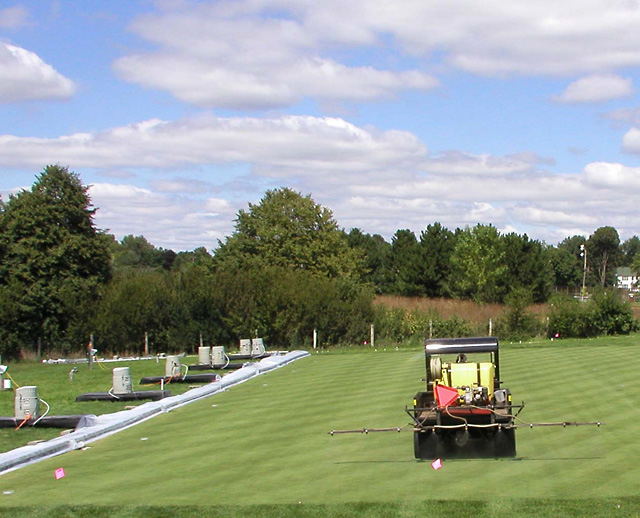在法院命令的要求之下,美國環保署(EPA)去年10月提案擬全面禁止將陶氏化學生產的殺蟲劑陶斯松用於農業。
2016年1月5日是EPA禁用提案公共意見徵詢期的最後一天,農工團體、環境健康與勞工團體聯盟提交公共意見書,代表法律專家、科學家和一般大眾共超過8萬人,要求EPA立即禁止使用陶斯松於所有作物。

陶斯松滲入飼料、糧食 高爾夫球場也常噴灑
陶斯松是1960年代陶氏化學開發的殺蟲劑,現在已經不受專利保護,開始大量出現在拜爾和BASF產品中。含陶斯松的產品廣泛用於飼料、糧食作物和飼養牛群的殺蟲劑耳標(Ear Tag)等農業用途,也可能用於高爾夫球場控制火蟻和蚊子,或是處理木頭圍籬和電線桿。
陶斯松是一種有機磷殺蟲劑,人類接觸、吸入或食入可能引起嚴重的神經中毒症狀。其作用機轉為阻斷神經細胞間傳訊的酵素。當這些酵素被阻斷,神經系統無法正常傳訊,導致神經系統運作失常,進而殺死害蟲。
陶氏化學指出,使用陶斯松的重要作物包括大豆、柑橘、葡萄、堅果、玉米和苜蓿。
傷及兒童、蜜蜂 天上飛的、水裡游的都是受害者
2014年12月,EPA承認同儕審查科學研究揭露,暴露於陶斯松和兒童腦部損壞有關,症狀包括智力降低、發展遲緩和工作記憶喪失。
EPA也發現,被陶斯松污染的飲用水對嬰兒尤其有害,對處理陶斯松或是在噴灑後進入農田的工人也造成極大的風險。
人類不是陶斯松唯一的受害者。
美國國家殺蟲劑資訊中心表示,陶斯松對許多鳥類、魚類和水生無脊椎動物而言也是劇毒。它可能在魚類和其他以小型動物為食的動物組織中累積。
陶斯松對蜜蜂尤其有害,噴灑24小時後仍可能使非目標害蟲的昆蟲中毒,甚至在用於土壤2周後仍能使蚯蚓中毒。
65位專業人士寫信 盼盡速禁用!
近期上訴法院裁決,EPA須在期限內有效回應環團與農民團體2007年提出的禁用請願書。15年後,EPA才總算在去年10月30日提案禁用陶斯松於居家環境。2016年1月5日是EPA禁用提案公共意見徵詢期的最後一天。農工團體、環境健康與勞工團體聯盟代表法律專家、科學家和一般大眾提交公共意見書。
陶氏化學表示陶斯松是安全的,在約100個國家核准使用,包括美國、加拿大、英國、法國、義大利、日本、澳洲和紐西蘭,皆用於保護現行各類作物。「陶斯松是經過最多重驗證的殺蟲劑。」陶氏化學指出。陶氏化學還主張,法院命令不合理要求EPA在所有科學分析完成前做決定。
不過環團和農業工作者不這麼這認為。「EPA和其他獨立研究顯示,陶斯松造成兒童腦傷,毒害工人與附近居民。EPA必須儘速全面禁用陶斯松。」
1月5日,EPA收到65位環境健康科學家和護理專業人員的來函,指出許多證據顯示陶斯松有害兒童,呼籲政府禁用。
「研究顯示兒童腦部發展受阻與微量的陶斯松暴露有關,而且效果是長期、不可逆,甚至是一輩子的。考量後果如此嚴重,EPA應立即禁用陶斯松,以保護兒童。」美國自然資源保護委員會資深科學家Jennifer Sass博士說。
EPA Urged to Ban Widely-Used Pesticide Chlorpyrifos
Under the threat of a court order, the Environmental Protection Agency last October proposed a ban on all agricultural uses of the Dow AgroSciences insecticide chlorpyrifos.
Now, more than 80,000 people have submitted comments to the EPA urging the agency to ban chlorpyrifos from use on all crops immediately.
First developed by Dow AgroSciences in the 1960s, chlorpyrifos is no longer patent protected and is now the active ingredient in dozens of pesticide products made by companies such as Bayer and BASF.
Products with chlorpyrifos in them are used in agriculture for feed and food crops and in cattle ear tags. They may be used on golf courses, and to control fire ants and mosquitoes. Products containing chlorpyrifos are also used to treat wood fences and utility poles, according to the National Pesticide Information Center at Oregon State University.
The six most critical crops protected, in terms of their agricultural and economic significance are soybeans, citrus, grapes, tree nuts, field corn, and alfalfa, says Dow Agrosciences.
It is one of the most widely used in a class of insecticides called organophosphates, which have the potential to cause severe neurotoxic symptoms in humans if touched, inhaled, or eaten.
Chlorpyrifos works by blocking an enzyme which controls messages that travel between nerve cells. When the enzyme is blocked, the nervous system cannot send normal signals. This causes the nervous system to malfunction and this is how it kills pests.
In December 2014, EPA acknowledged peer-reviewed science linking chlorpyrifos exposure with brain damage to children, including reduced IQ, delayed development and loss of working memory.
The agency found that drinking water contaminated with the pesticide is particularly harmful to infants, and highlighted the serious risks to workers from handling chlorpyrifos or entering fields after spraying.
Recent appeals court decisions gave EPA a deadline to take meaningful action on a 2007 legal petition to ban the chemical submitted by environmental and farmworker groups.
On October 30, 2015, EPA proposed to ban the pesticide on food crops, 15 years after banning it for residential use.
Today is the end of the public comment period on the EPA’s proposed ban. A coalition of farmworker, environmental health and labor groups submitted comments on behalf of legal experts, scientists and the general public.
Dow AgroSciences says the pesticide is safe. “Chlorpyrifos is one of the most widely used pest control products in the world. It is authorized for use in about 100 nations, including the U.S., Canada, the United Kingdom, Spain, France, Italy, Japan, Australia and New Zealand, where it is registered for protection of essentially every crop now under cultivation. No other pesticide has been more thoroughly tested,” the company said in a statement October 30.
Environmentalists and farmworkers don’t see it that way. “EPA’s and other independent findings show that chlorpyrifos causes brain damage to children and poisons workers and bystanders,” said Patti Goldman, the Earthjustice attorney handling the case, “It is imperative that EPA move quickly to protect workers and children by issuing a final and total ban to this widely-used pesticide.”
Dow Agrosciences argues that the court is rushing the EPA to act before all the scientific analyses have been completed.
But today, EPA received a letter from more than 65 environmental health scientists and healthcare professionals, citing extensive evidence that chlorpyrifos harms children and urging the government to ban the pesticide.
“Studies indicate that disruptions in children’s brain development are associated with very low levels of chlorpyrifos exposure, and the effects appear to be permanent, irreversible and lifelong. Given the seriousness of these effects,” said Dr. Jennifer Sass, senior scientist with the Natural Resources Defense Council. “EPA should act now to ban this dangerous pesticide and protect children.”
Humans are not the only victims of chlorpyrifos poisoning. The National Pesticide Information Center says chlorpyrifos is “very toxic” to many bird species, and to fish and aquatic invertebrates. It may build up in the tissues of fish and other animals that eat smaller animals.
Chlorpyrifos is “very toxic” to bees. It can poison non-target insects for up to 24 hours after it is sprayed. Chlorpyrifos can be toxic to earthworms for up to two weeks after it is applied to soil.






